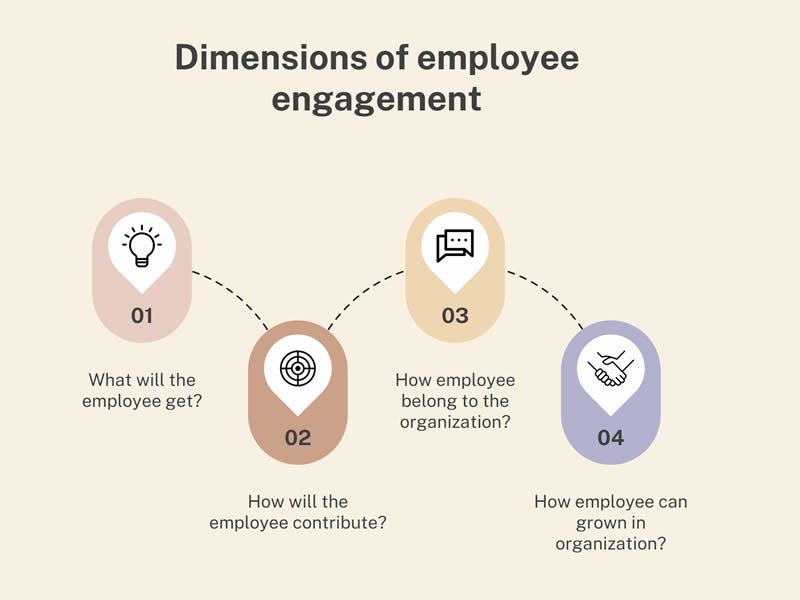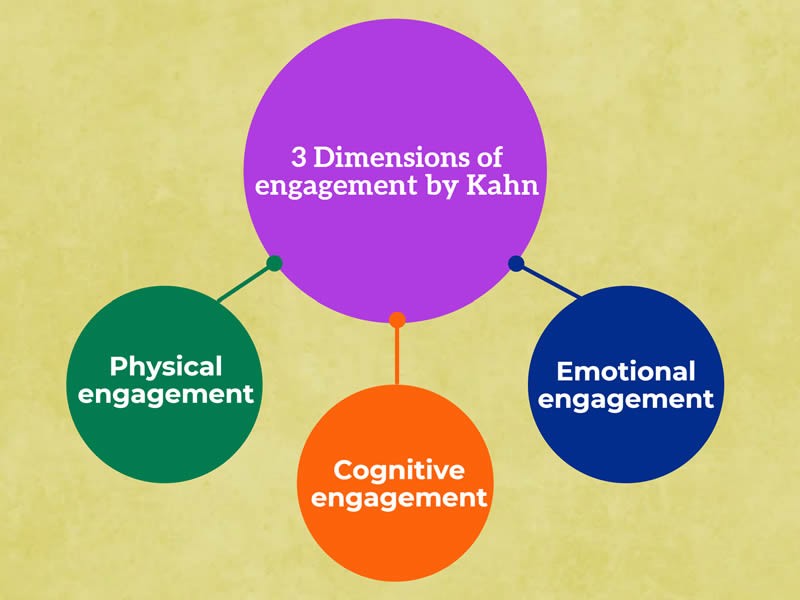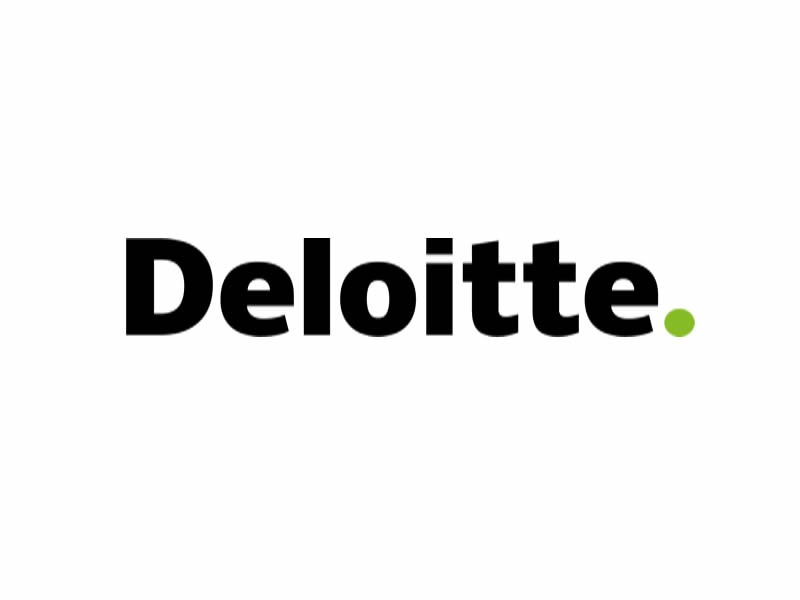Insight Blog
Agility’s perspectives on transforming the employee's experience throughout remote transformation using connected enterprise tools.
8 minutes reading time
(1562 words)
Kahn’s 3 Dimensions of Employee Engagement – A Complete Guide
Within his work, Kahn identified three principle dimensions of employee engagement - physical, cognitive and emotional. Let's dig a bit deeper into this topic.
Quality personnel and a high level of job devotion distinguish highly productive organizations from their less productive counterparts.
Additionally, a company's faith in its employees and the efforts it makes to keep them engaged and motivated are two of the many elements that differentiate high-performing workplaces from those that fall short.
In order for an organization to fulfill its goals and nurture a high-performance work environment, it must take significant actions.
They require individuals who are capable of completing their tasks and doing them to the highest possible standard.
All of an organization's objectives can be met only with personnel who are actively involved.
Employee involvement is only possible in companies that view their employees as their most valuable assets and provide their basic physical and emotional requirements. Work environments that meet all of the requirements for a high level of employee engagement expand more quickly and last longer than those that don't.
There are a number of critical factors to consider when deciding whether or not an employee is satisfied with the compensation they receive for their work, whether or not they are able to perform at their peak, and whether or not their employer treats them as an asset or a means to an end. Employees' basic requirements are shown through these emotional aspects.
They will only participate if their efforts are acknowledged and rewarded. In addition, they can motivate them to be more productive while they are at work.
Dimensions of employee engagement
To a large extent, employee engagement is influenced by the compensation they receive for their work. Included in this are the fundamentals of pay, benefits, company culture, and the working environment. These are the basic aspects that entice them to join the organization and devote themselves to the task at hand to the fullest extent possible.
Setting clear expectations is critical since it is a two-way process. In this way, employees are able to better grasp what they are expected to contribute to the company. There are many things to consider, such as establishing their job duties and the tasks they must complete. Employees need to know what is expected of them from the human resources team and their direct supervisors or managers. It fosters stronger ties between supervisors and subordinates, as well as between workgroups and their leaders.
Everyone's most basic need is for social interaction. Even employees want to stay with a company that sees them as more than just a tool to accomplish a task. As a result, they're more likely to put in the effort to achieve the company's objectives.
Employees are more likely to stay at a company if they are given opportunities for advancement, including raises in compensation and bonuses. They remain enthused about their work because of the constant flow of new challenges and learning opportunities.
Principal dimensions of employee engagement
Job satisfaction, a pleasant working environment, advancement possibilities, and the financial stability that comes with a stable job are just a few of the factors that contribute to a motivated workforce. As part of the company's strategy to enhance productivity and gain a comparative advantage, all of these factors are critical.
The engaged workforce's component of job satisfaction is critical because if employees are happy in their jobs, other factors can be overlooked, but dissatisfied employees limit the good effects of other factors.
Prospects for development
- An organization's success is also dependent on its employees' involvement in its day-to-day activities. With incentives and opportunities for advancement, workers will work hard and actively participate in the organization's operations in order to maximize their rewards.
- Workers' productivity and skill efficiency can be improved by one of the following: Although it may seem counterintuitive, rewarding workers for their efforts might have a negative impact on productivity and dullness in the workplace.
- As a result, listening to employees' concerns and ensuring their well-being will lead to a more productive workplace.
Ensuring the safety and well-being of employees
- In addition to job security and reward schemes, the well-being of employees plays a significant role in determining employee engagement.
- It is possible that if a driver is concerned about his or her job security, he or she will work harder to secure a permanent position and contribute their full energy to the effort.
- Workers' productivity will suffer as a result of their fear of being dismissed.
- Additionally, the job uncertainty raises the competition among employees in attempting to retain their classification.
Appreciation and rewards that are based on performance
- Workforce participation in business operations and activities relies heavily on all of these motivating factors. So, in order to reach its aims, the corporation needs to pay attention to these components of employee interactions (Rama Devi, 2009).
- Workers' motivation will rise as a result of the organization's efforts to motivate them to perform at a better level of productivity in exchange for higher wages and benefits. You may find a huge selection of custom-engraved awards and plaques at FineAwards that are perfect for honoring the contributions of top-performing staff.
Analyze the most important gains for all parties
- Workforce challenges and needs should be taken into consideration so that management may plan for the future and minimize inefficiency by employees owing to any workplace issues that may arise.
- A company's success depends on its suppliers and distributors, both of whom could be rewarded for remaining loyal to the business.
- Due to the fact that suppliers provide all of the production's supplies, distributors should be given special consideration, and both should be appropriately compensated. Distributors also facilitate access to the market and consumers.
- Identifying and strategizing for the filling of functional gaps in the workforce.
- Workers will remain actively involved in the organization's operations as these tactics are put into practice and evaluated on a regular basis.
Kahn 3 dimensions of employee engagement
Employee involvement can be broken down into three main categories: physical, cognitive, and emotional. This is how they're defined:
Physical engagement
- This is a measure of how much effort individuals put in while doing their duties, both physically and mentally.
- Kahn cited examples of employees who said they felt like they were 'flying about' while at work because they were so engaged.
- Confidence can be boosted by being able to use both physical and mental energy at work, according to him.
Cognitive engagement
- Employees need to know what their employer's vision and strategy are, and what performance they need to give in order to contribute to them as much as possible, in order to be engaged at this level.
- In addition, Kahn emphasized the significance that people connected to their profession, believing that more information stimulated more creativity and confident decision making.
Emotional engagement
- Employees' emotional attachment to their employer is the foundation for this.
- The organization must learn how to foster a feeling of community among its employees so that they may put their faith in and support the company's core values and mission.
- Kahn emphasized the importance of positive interpersonal relations, group dynamics, and management styles in creating a safe and trusting workplace.
6 dimensions of employee engagement
Has the COVID-19 pandemic changed the expectations of your company as a worker? Are you having to come up with creative strategies to attract, engage, and retain your workforce?? To both questions, the overwhelming majority of corporate executives and staff have said "yes."
In the wake of the pandemic's assault on our most fundamental needs—security, health, well-being, and the ability to maintain a family—the "contract" between employees and employers has been altered. A supportive and flexible work environment that prioritizes employee well-being has worked effectively for certain companies, but not for others. It is possible for organizations to boost employee engagement by focusing on the six dimensions listed below:
- Motivating
- Empowering
- Improving working environment
- Integrity and caring
- Improving leadership
- Rewards
Deloitte model of employee engagement
Deloitte Touche Tohmatsu Limited, one of the world's Big Four accounting companies, created and promoted the Deloitte model. Deloitte's ability to keep its people engaged has significant consequences for its organization, with over 330,000 employees worldwide. The corporation spent two years establishing its own employee engagement philosophy, with the goal of making their environment "irresistible."
Deloitte identified five aspects of engagement:
- Trust in leadership
- Growth opportunity
- Positive work environment
- Hands-on management
- Meaningful work
Deloitte established its model after conducting extensive employee interviews. Meaningful work, hands-on management, a great work environment, opportunities for progress, and trust in leadership were identified as the core pillars of engagement in their research.
Download our eBook on How to get your intranet off the ground.
Categories
Blog
(2600)
Business Management
(319)
Employee Engagement
(207)
Digital Transformation
(173)
Intranets
(119)
Growth
(118)
Remote Work
(61)
Sales
(48)
Collaboration
(37)
Culture
(29)
Project management
(29)
Customer Experience
(26)
Knowledge Management
(21)
Leadership
(20)
Comparisons
(5)
Ready to learn more? 👍
One platform to optimize, manage and track all of your teams. Your new digital workplace is a click away. 🚀
Free for 14 days, no credit card required.


















